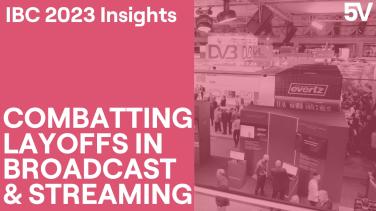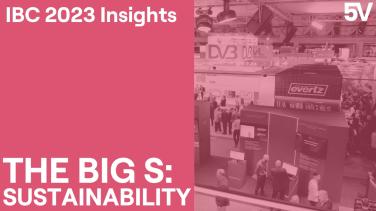Article content
The rise in demand for RDK has sky-rocketed in recent years, particularly since the pandemic struck in early 2020. With people stuck in their homes in need of easier, stress-free ways to view content, browse and control their home networks, we saw a surge of interest, investment and demand.
The development of this particular technology has been so incredibly rapid that in 2020 alone, the industry saw an increase of 60 million devices using RDK-based software across the globe – a 20% increase on 2019.
But what exactly is RDK? And what do all the variations of RDK, such as RDK, RDK-V, and RDK-B, mean? To help you with this daunting subject matter, we’ve created this blog which explains the basics of RDK. So let’s jump right in!
What is RDK?
‘RDK’ stands for Reference Design Kit, and quite simply put, it’s an integrated piece of software that enables any Pay TV operator to develop and launch new, user-friendly services for video streaming, broadband and hybrid services.
RDK provides the building blocks to companies looking to create apps and software that enhance their customer’s experience whilst using their product and cuts out the hard work of each Pay TV company coding such complex software.
It also means that those companies who use the code share the same base for their services. For example, companies who have used the RDK software can build upon it to create a family of devices.
With these, you can watch live TV or choose to watch streaming services such as Netflix, Disney+ and Prime Video. RDK is deployed by leading Pay TV operators, including names you have most likely heard of, Liberty Global and Comcast (just to name of few).
RDK is the software they would have used to build upon and create such an in-depth service. With this coding, operators can:
- Quickly develop and release new internet video viewing apps
- Support brand-new technology such as voice control and recognition and algorithm compilation of user preferences
- Make use of user behaviour data safely and securely
Additionally, there are also a few different types of RDK software, each of which can be used in different areas such as video, broadband and cameras.
RDK-V/B/C – What do they mean?
When you first look into RDK, there are enough abbreviations to send you into a tailspin. But simplified and explained, they’re not too difficult to wrap your head around.
RDK-V
The ‘V’ in RDK-V simply stands for video, so reference design kit for video. RDK-V is specific software geared towards streaming services, video services (YouTube), and connected media devices, such as your set-top box, Amazon Fire stick or game consoles. It is specific to these services and enables companies to build upon apps and complete customisation to create a final product.
RDK-B
The ‘B’ in RDK-B stands for broadband and refers to the coding for next-generation broadband products and services from broadband providers. RDK-B is integrated into broadband devices to give the user much more freedom in managing their Wi-Fi, WAN, and Lan experience, with features such as instant diagnostic help, restricting online content and managing devices on the network.
RDK-C
The ‘C’ in RDK-C stands for camera. This is one of the newest forms of RDK and is being integrated into at-home security cameras with apps to control the online management of these cameras no matter where you are.
Interestingly, RDK-C is also being developed to create an at-home viewing experience of events and shows – potentially even live ones. For this, smaller cameras will be planted around sporting events, concerts and potentially theatre shows, with virtual reality headsets giving the viewer the feeling of being at the event themselves. This is still in the development stage, but it is an exciting future prospect for RDK techs and Pay TV companies.
RDK-4: The Future
In late 2020, it was unveiled that RDK-4 (yes, another branch of RDK software!) was set to be put to use very soon, which excited anyone and everyone in the field. But what is RDK-4?
Briefly put, this next-generation platform is a faster, easier and more customisable variant of RDK-V. This new development will be able to quickly move us to a universal SMART viewership experience across the world.
With the combination of Firebolt, Lightning Application and Thunder Modular, operators can create new apps with much more flexibility in much faster timeframes.
Beginner’s Guide to RDK: A Summary
RDK (Reference Design Kit) is an integrated piece of software that’s primarily used in entertainment and allows companies to create new, user-friendly services for video streaming, broadband and hybrid services.
There are various types of RDK software, RDK-V, B and C, which are designed to be used in certain applications, namely video, broadband and cameras. In addition to this, there is RDK-4, a next-level software that will allow for SMART viewership experience across the world.
To find out more about how you can engage with RDK Technologies, check out this 5V Video.










